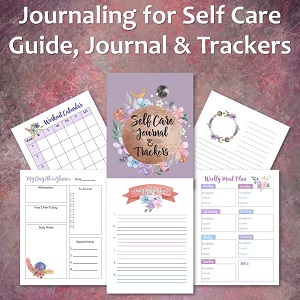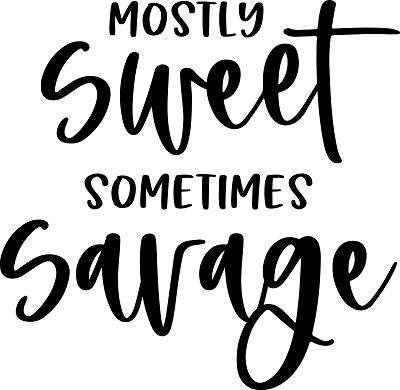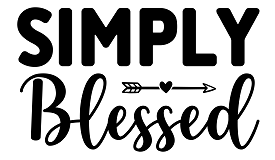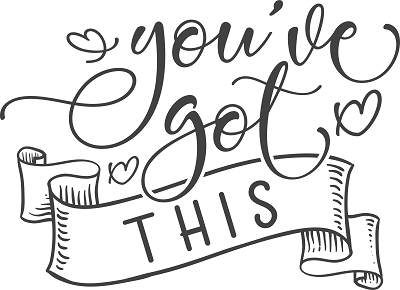 Journaling is one of those activities that most people have the basic grasp of, but until they start doing, have no idea what type of benefits they actually get from it.
Journaling is one of those activities that most people have the basic grasp of, but until they start doing, have no idea what type of benefits they actually get from it.
It used to be that journaling was compared to writing in a diary, and in many ways, that is still the case. You use the journal to write out your thoughts and feelings, write about your dreams, discuss your goals and life aspirations. You can also talk about things you are struggling with and what you are trying to work through in order to get a little more clarity.
It is almost impossible to list all the many ways journaling benefits your life. From using it for self-care and clarity, to de-stressing and easing your anxiety, it truly is a wonderful tool that everyone should be using.
Another way that journaling can benefit you is by helping with your creative side. Whether you are an artist or writer, someone who likes creative activities like different hobbies, or you want to be more creative in your everyday life, it is going to help you.
Keep reading to learn about how the simple act of writing in a journal every day helps you be the most creative version of yourself.
1 – How Journaling Helps with Creativity
Let’s start with the basics – which is why and how journaling can actually help with your creativity. Keep in mind this is not just for artists and writers, but all types of creative people, and people who don’t feel creative and want to explore that part of themselves more.
Here are just some of the ways journaling can help, but really this list could be miles longer. Starting journaling yourself is the best way to see all the many ways it can help you.
You Unleash What is Holding You Back
One of the first things you might notice when you start journaling, is that a lot of things come up you haven’t thought about before, or at least not in a while. This is where that magical “clarity” and “self awareness” comes in. These are two things that people discuss often in terms of how journaling has helped them.
The trick here is to be 100 percent honest when you journal. If you are concerned someone will find it and read your inner feelings, then keep it safe! Make your journal private. Don’t let anyone see what you write, and if you fear they might get curious, never write in it when other people are around. That way they have no idea you are using it.
By being honest with yourself, you tap into what has been holding you back and what you might be hiding even from yourself. This is what people are talking about when they say clarity. The mind and subconscious are powerful things, and often times you have thoughts and ideals far back in your subconscious that need a little coaxing.
These thoughts are shy and might take a little convincing, but once you start journaling to reveal them, something magical happens. You not only understand yourself a little more, but you discover what was holding you back in a creative capacity.
When you get to know yourself more and who you really are, you discover your inner creative soul and are able to express that much more freely.
You Can Sketch in Your Journal
Aside from just writing in your journal, keep in mind that you can also use it for creating the art itself. If you are an artist or want to be more artistic in your creative endeavors, use your journal! You can start creating different types of sketches on full pages of the journal, or just to describe what you are talking about.
Drawing in the journal provides additional advantages as well. When you are writing about something complicated, and find it easier to sketch your feelings instead of put them into words, journaling is great for that.
It can also help you to explore different emotions through your sketches, by seeing what direction your art goes under different circumstances. You can also use different types of art medium and materials to express yourself even further.
Ideas Come to Life with Journaling
Another amazing benefit of journaling for your creativity, which we will explore more in a later section, is that your ideas often come to life. You can explore them, get them out on paper, and either write or sketch them out.
It is not uncommon for your brain to be filled with different ideas, but with no real way to express them, they either pile up, or you end up forgetting about many of them.
Don’t let this happen! Start using your journal to write down every single idea you have, creative or non-creative, and you will be surprised by how much you can actually flesh out these ideas. They soon become something and you are able to let your creative nature explore even more.
It Becomes a Part of Who You Are
Journaling and creativity truly go hand in hand, and they just become a part of you. You put your heart and soul into journaling in the same way you do any creative endeavor. You become someone that is more free with their feelings, isn’t afraid to hide their emotions, and has found a new and healthy way to express themselves.
Clarity Often Precedes Creativity
As mentioned previously, journaling can bring you a lot of clarity. When you have more clarity and self-awareness, you know a lot more about yourself and what motivates you. This in turn can help to promote more creativity.
This process is gradual, so don’t expect a miraculous change overnight. However, the more you journal and really get to know yourself, the more you will see what motivates you to succeed, and where your inspirations for being more creative come from.
Maybe you understand when and why you like to write, and what you want to create with art or other creative aspirations. This can also help when you need to be more creative in your job, no matter what that job is. Or if you just want to boost your creativity in your everyday life.
2 – Try a Brain Dump of Ideas
Ah, the brain dump. There are few things that are more beneficial to anyone, especially those who crave some more creativity in their life, and a little less chaos. Here is what the brain dump is all about.
About Brain Dumps
It is exactly how it sounds – you are dumping all those thoughts in your brain, onto paper. This serves a few purposes. First of all, it helps to get through all the overwhelming chaos of multiple thoughts that often happens. This happens to everyone, but tends to be worse with people who have busy lives and demanding jobs.
Another benefit of the brain dump is that it can help you come up with ideas you didn’t know you had. This is really useful if you want to be more creative and give yourself time and freedom to be creative.
How to Do a Brain Dump
The simplest way is to just start writing down your thoughts in your journal. You can start anywhere, but typically once pen hits paper, you already know what direction you want to go. Don’t think about it too much; just keep writing until you feel relaxed. You will notice the moment when you have gotten all the most important or worrisome thoughts out. It feels like you can take a deep breath again.
Organizing Your Thoughts
If you are like most people, the thoughts will be extremely scattered, one bouncing off another. This is when you want to take your thoughts and start organizing them to try and make more sense of them. Take your journal entry and make notes or re-write some of them on other pages if you are using categories. This will of course depend on
what you have written down.
Now What?
This is not something you necessarily need to do anything with. Sometimes, you will come up with ideas or even have a creative spark during a brain dump that inspires you to start a new project. Other times, it is just done to clear your head so you can focus on other things.
Try to do brain dumps in your journal on a routine basis to get the full benefits of them.
3 – Journaling Tips for Writers
Journaling for creativity is incredibly useful for everyone, no matter what creative endeavors you have. Let’s start by talking about how it can help writers. This can be for any type of writer, whether you are an author (published or not), write poetry or long novels, are a blogger, technical writer, or just like to write as a hobby.
When you are a writer, you are similar to an artist. You give a part of yourself to this form of art, so by journaling, you are able to unleash what you have hiding deep inside. There is a reason experts often tell you that your first novel should be about what scares you or be about something you have personally experienced – because your own truth comes down as passion on the pages.
Here are some different ways you can use journaling for your writing.
Start with the Brain Dump
Yep, you guessed it, we’re starting with a brain dump! You already know how beneficial this is from the previous section, but let’s explore this a little more with writers specifically. The brain dump is going to really channel what you have going on inside. It gets out not just your ideas, but your thoughts, feelings, feels, insecurities, and passions.
These can all be put down on paper when you begin writing again, but for now, just
write it all in your journal and see what you end up with.
Write Down All Your Ideas
The next step after you have finished the brain dump is to write down any other ideas you have come up with. This is where you aren’t just dumping all your thoughts in the journal, but specifically your ideas for what you want to write next.
Remember this can be anything, depending on the type of writer you are or want to be. If you like writing for your blog, but are a little stuck, just write down some ideas of what you might be able to cover on the blog, and see if you can flesh out those ideas.
For poets or story tellers, write down just some basic ideas. Maybe you don’t know the entire story yet, but you have an idea for the main plot, some of the characters names, or just where it is going to take place.
Flesh Out the Ideas
If you haven’t done so already, flesh out these ideas that you have written down. Maybe as you were writing down a location and decade for your story, you thought of a few townspeople that you believe with add something to the story. Just flesh out any ideas you have written down and make notes for anything you can think of.
This is all part of the creative process. Writing a book is not linear. It will be a lot of note taking, back and forth, changing things up, and going through many edits before it’s complete.
Do Some Personal Journaling
Journaling for your creative writing spark isn’t just about journaling what you want to write, but journaling for yourself. This is also very important to channeling your inner creative soul. Personal journaling is when you do a simple stream of consciousness, where you just write down whatever comes to your mind.
It is not necessarily a brain dump of all your thoughts, but you just naturally let your pen tell you where you want the journaling to go. You might be stuck on one thing bothering you in your life and need to write it down. Other days, you just draw a little sketch of how you are feeling.
Use Journaling Prompts
You are going to get some examples of journaling prompts to use in the last section, but one thing to know now is WHY you should use them. Journaling prompts are often used by people who want to write in their journal, but tend to get stuck on what to write about. Perhaps the first few weeks you did great, but then your brain kind of got stuck on what to journal about.
This is where journaling prompts come in. Prompts are simple statements or questions that tell you a topic to write about. Some are simple and only require journaling a sentence or two. You can leave it at that, or use prompts to really think about the topic and explore it more in your journal.
Write Poems or Short Stories
Lastly, journaling can help writers by actually writing some pieces of work right in your journal. Not just brain dumping or writing ideas, but using the journal as your creative space. Make sure you save these journals to look back on later!
Try just writing a little short story that is no longer than a page or two, or writing a poem about any topic on your mind. These are not only great exercises to get back into the habit of writing, but are a lot of fun! They can be very therapeutic for anyone who wants to journal and be a writer at the same time.
4 – Journaling Tips for Artists
Maybe you aren’t a writer, but your creative aspirations are more along the lines of a more traditional form of art, such as painting, drawing, doing digital art, or the many other mediums that are now available. Journaling can be equally as beneficial for your creative soul!
Your entire heart and soul goes into your art or creative hobby, no matter what it is, similar to writers. Even when you don’t realize it, what you choose to create and the entire creative process is related to how you feel and who you are. This is why journaling can impact your art so much. It can channel different parts of your subconscious and allow your art to go in brand new different directions.
Here are some ways to use your journal for different forms of art.
Doodle on the Pages
The first way you can use your journal for artistic purposes is to start doodling on the pages. This might seem like such a simple thing and that it wouldn’t make an impact, but it does, especially later on. Whenever you write in your journal, just make a little sketch or doodle on the page or the section between each different topic.
What happens is you get a visual to go along with what you’re writing about. What you choose to draw, whether or not you use color, the size, shape, and everything about it matters. People often think they just draw or create what they like with no thought behind it, but this is often not true.
Your subconscious knows what it is doing. You are making all the decisions with every creative endeavor you take on. Each piece is a part of who you are, and as mentioned before, the journal is just helping you do that more succinctly.
Experiment with New Art Styles
You can also use your journal to explore and experiment with different styles of art. This begins with just journaling about the types of art you want to do, then writing down why. Some people can’t just keep all of this in their head and really need to get it out on paper.
Once you do that, grab some art supplies and try doing it right in the journal. You can also use a sketchbook or even a painting pad as a journal, as the pages are strong enough to handle paint and charcoal, and whatever else you want to use.
Write About Your Art
Lastly, artists can use their journal to write about their art. Do this before, during, or after you create something. It is great to have a journal specifically dedicated to your creative endeavors. Write down what you want to create and why, kind of fleshing out the ideas like a writer would.
You can then make little sketches in your journal or sketchbook, and when you get stuck while creating something, come back to your journal and write about your experiences. Keep writing in the journal during and after it is done, and you are able to see the entire journey right there.
5 – Journaling Prompts for Creative People
Here are a few examples of journaling prompts that work great for creative people:
- What do you want your first story to be about?
- Is there something getting in the way of you being creative?
- When you think about creating something, what is the first thing that comes to mind?
- Go to your favorite outdoor place, and write down everything you see in great detail.
- Come up with a new character and describe everything about them.




